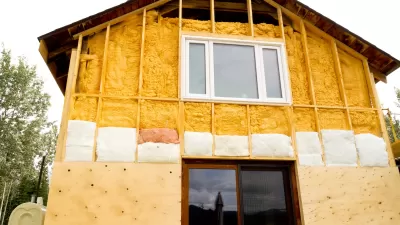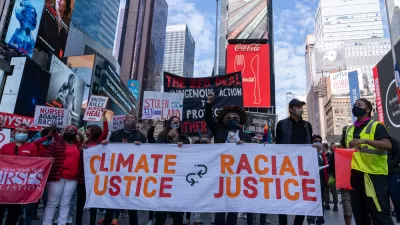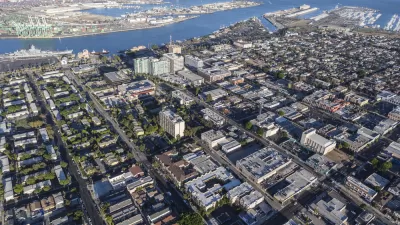Without more specific regulations, the Justice40 initiative, which requires spending 40 percent of federal funds in underserved areas, could fund projects that increase emissions and pollution.

“In President Biden’s first weeks in office, he established an environmental justice initiative called Justice40, which aims to direct benefits from federal investments to disadvantaged communities.” As Abigail Grimminger reports in Streetsblog, “The executive order listed the following as areas of emphasis: clean energy and energy efficiency, clean transit, affordable and sustainable housing, training and workforce development, the remediation and reduction of legacy pollution, and the development of critical clean water infrastructure.”
But as states and cities receive federal funding for climate projects, “states and local governments are primed to make these investments without any direction on how to ensure that 40 percent of the benefits go to the people and places most in need.” As Grimminger explains, this is because, “First, US DOT does not have the authority to meet that number because 69 percent of infrastructure funds are formula grants and have very few strings attached.”
“Second, even if the US DOT was on track, there’s a huge difference between simply spending 40 percent of money within underserved communities, and spending 40 percent to accomplish something productive or bring measurable benefits to those places,” Grimminger notes, pointing to highway expansion projects as one example of an infrastructure investment that would bring negative impacts, despite counting toward the 40 percent goal.
According to Grimminger, “The Office of Management and Budget is expected to release guidance on Justice40 soon. Fundamentally, it needs to be honest and clear about what funding they have the power to steer—and consider that in the future when they negotiate huge amounts of funding that they cannot influence at all.”
FULL STORY: Biden’s ‘Justice40’ Initiative Could Mean More Emissions, Worse Health Outcomes in Poor Areas

Americans May Be Stuck — But Why?
Americans are moving a lot less than they once did, and that is a problem. While Yoni Applebaum, in his highly-publicized article Stuck, gets the reasons badly wrong, it's still important to ask: why are we moving so much less than before?

Using Old Oil and Gas Wells for Green Energy Storage
Penn State researchers have found that repurposing abandoned oil and gas wells for geothermal-assisted compressed-air energy storage can boost efficiency, reduce environmental risks, and support clean energy and job transitions.

Placekeeping: Setting a New Precedent for City Planners
How a preservation-based approach to redevelopment and urban design can prevent displacement and honor legacy communities.

San Francisco’s Muni Ridership Grew in 2024
The system saw its highest ridership since before the Covid-19 pandemic, but faces a severe budget shortage in the coming year.

Colorado Lawmakers Move to Protect BRT Funding
In the face of potential federal funding cuts, CDOT leaders reasserted their commitment to planned bus rapid transit projects.

Safe Streets Funding in Jeopardy
The Trump administration is specifically targeting bike infrastructure and other road safety projects in its funding cuts.
Urban Design for Planners 1: Software Tools
This six-course series explores essential urban design concepts using open source software and equips planners with the tools they need to participate fully in the urban design process.
Planning for Universal Design
Learn the tools for implementing Universal Design in planning regulations.
Heyer Gruel & Associates PA
City of Moreno Valley
Institute for Housing and Urban Development Studies (IHS)
City of Grandview
Harvard GSD Executive Education
Salt Lake City
NYU Wagner Graduate School of Public Service
City of Cambridge, Maryland





























